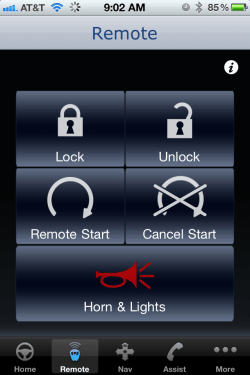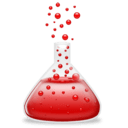The Business Case for Revenue Generation Software
 Making a business case to your management team for Revenue Generation Software is not difficult to do as long as you’ve got the right information in hand. When presenting your business case we suggest sticking to the following outline:
Making a business case to your management team for Revenue Generation Software is not difficult to do as long as you’ve got the right information in hand. When presenting your business case we suggest sticking to the following outline:
1. Highlight Problem Areas
2. Show ROI
3. Advocate new marketing strategies
Keep your justification brief and be ready to drill down into specifics if asked. Let’s highlight some data points for each of the aforementioned areas to help you strengthen your business case for Revenue Generation Software:
Problem Areas
Many B2B marketing authorities have studied the lead management automation (LMA) and/or marketing automation industry. Here are some important facts that expose deficiencies in most B2B companies:
• Only 3-5% of new lead inquiries are “sales-ready”
• 70-80% of the other inquiries are latent demand that will buy within 2 years, but are typically lost, ignored or discarded by sales
• 73% of companies have no process for revisiting leads leaving databases to become “stale”
• 80% of marketers send unqualified leads on to sales
• 90% of marketing deliverables are not used by sales
• 90% of website visitors don’t identify themselves
• 87 out of 100 deals are left behind by sales
• It takes 7 to 9 proactive communications to gain a B2B decision-makers attention
• 30% of sales reps turnover each year, 7 months to ramp up
Consider the points above and assess whether or not your company faces these challenges.
Show ROI
Best-in-class sales and marketing teams generate 4x more closed deals than average teams using the same pool of leads. Closing 4X more deals will surely be an eye-opener for any manager or executive. In addition to a hard-ROI it’s important to highlight the soft-ROI. In other words, how else will revenue generation software positively influence your organization’s people, products and process?
ROI for Marketers
• Gigantic productivity boost for marketing. Marketers no longer have to run campaigns manually; they can automate them and schedule them in advance. Marketers can create more campaigns with fewer resources while delivering more, higher qualified leads to their sales team. Finally, marketing can respond more quickly and push out new campaigns at a rapid pace with drag/drop tools that simplify campaign creation without having to lean on IT for support.
• Marketers will keep their business one step ahead of their competition and claim the majority of a prospects mind-share using state-of-the-art technology that intelligently automates and improves processes. Leave no lead left behind and distance your company from its competitors.
• Marketers will get more out of their campaigns. Revenue Generation Software allows marketers to better track and measure metrics that help them tweak and tune performance of marketing campaigns. Campaign response rates usually double when Revenue Generation Software is used to drive campaigns.
Marketers aren’t the only people that directly benefit from using Revenue Generation Software. Sales people reap reward as well. Here are some highlights of how Revenue Generation Software will help your sales team:
ROI for Sales
• Sales people will get more information about their leads. Sales will better understand a prospect’s interest, past behaviors and overall interaction with your company.
• Sales will receive more qualified leads. Revenue Generation Software uses automated technology to qualify leads using company-specific criteria that’s unique to your business.
• Like marketing, sales will also see a gigantic productivity boost. Instead of getting a pile of business cards, an excel spreadsheet or CRM view of a bunch of “leads” from marketing (what sales people would call “contacts”), sales gets quick access to prioritized leads sorted by qualification criteria. Additionally, sales people get real-time alerts when their favorite lead or company visits your website.
Sales and marketing will benefit individually and especially as a whole. It’s not uncommon for sales and marketing teams to be disconnected and think independently. Unfortunately, prospects and customers suffer from disparate sales and marketing processes as communication breaks down. Through the implementation of Revenue Generation Software sales and marketers will naturally become more aligned. Your sales and marketing teams will experience:
ROI for Sales and Marketing Teams Together
• A common view of the company’s revenue cycle. A revenue cycle is a combination of a marketing funnel with the sales funnel. As B2B buyers change, marketing is able to make greater contributions to company revenue garnering closer alignment between organizations.
• Improved marketing and sales productivity along with stronger top line growth.
• A collective understanding of how to improve marketing campaigns, track leads, measure results, improve data quality and nurture leads through the funnel.
New Marketing Strategies
While making the business case for Revenue Generation Software it’s important to highlight how the software will help you hit your current goals give to you by your manager. It’s equally important to highlight what marketing automation will add to your marketing bag of tricks. Here are a few ideas to get you thinking:
• Lead nurturing which increases communication with contacts in your database by sending them timely and relevant information to build relationships and progress them through your funnel.
• Monitoring website behavior which keeps a digital trail of information as prospects fill out forms, visit web pages, use keywords to search for your business and make return visits.
• Lead qualification using lead scoring to assign numerical values to leads that meet your qualification criteria helping to prioritize who is hot and who is not.
• Improved content creation strategies with the use of WYSIWYG editors and templates to build marketing emails. Also, drag/drop tools to build web forms and landing pages. These marketing tools are easy to use and don’t require additional 3rd party resources or IT – which saves companies money.
Building a Hard ROI
The below information is helpful when building a “soft” ROI to support a “hard” ROI (financials). Want to go a step further and build a hard ROI demonstrating financial return? We’ve got lots of experience doing just that! Contact us if you’d like a copy of our model and formulas which will help you build your business case for revenue generation software.
To be alerted of future posts, please click on the RSS button.












